Long Branch Guidelines Pilot Project: David Godley shares his version of an Illustrated Analysis Grid
David Godley of Long Branch has prepared the following photos and text for his August 2016 August Update Addendum.
Four categories of photos – click on the photos to enlarge them; click again to enlarge them further
The four categories, into which the photos have been organized, are:
(1) Good Development for Long Branch: Six photos are in this category.
(2) Distinctive Character of Long Branch: The three photos in this category feature historic Long Branch houses from which elements could be transferred to new development to reinforce character.
(3) Bad Development for Long Branch: The six photos in this category are examples of houses that are not sensitive or harmonious. If an architect were asked to design houses that would most violently clash with Long Branch character these would be them.
(4) Conservation in Bolton, England: The first two photos in this category feature a Historic Hall; the final two photos feature New Townhouses.
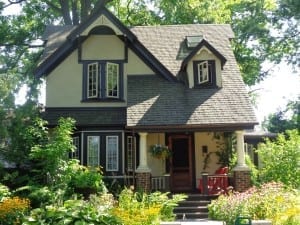
Distinctive Character of Long Branch – Historic Long Branch houses from which elements could be transferred to new development to reinforce character: Long Branch Avenue (7)
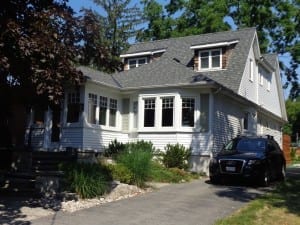
Distinctive Character of Long Branch – Historic Long Branch houses from which elements could be transferred to new development to reinforce character: Lake Promenade (Second Storey added) (8)
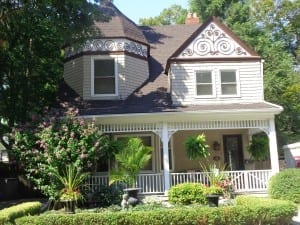
Distinctive Character of Long Branch – Historic Long Branch houses from which elements could be transferred to new development to reinforce character: 35th St. (9)
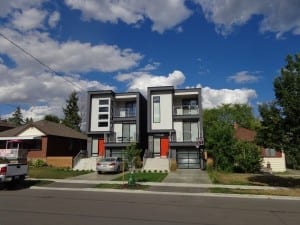
Bad Development for Long Branch – Example of houses that are not sensitive or harmonious: 32nd St. (10)
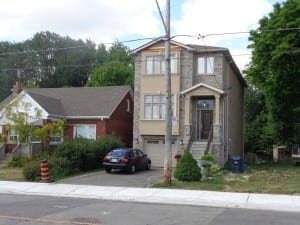
Bad Development for Long Branch – Example of houses that are not sensitive or harmonious: 23rd St. (11)
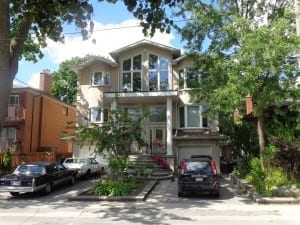
Bad Development for Long Branch Example of houses that are not sensitive or harmonious: 35th St. (12)
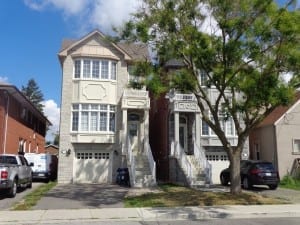
Bad Development for Long Branch – Example of houses that are not sensitive or harmonious: Elder Ave. (13)
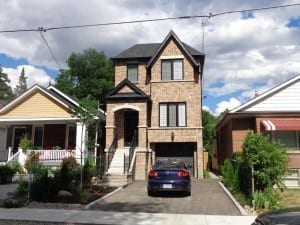
Bad Development for Long Branch – Example of houses that are not sensitive or harmonious: 39th St. (14)
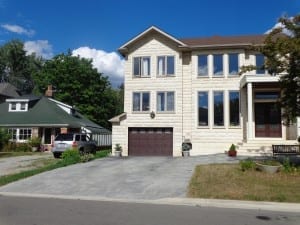
Bad Development for Long Branch – Example of houses that are not sensitive or harmonious: Walnut Cres, Monster House dwarfing historic cottage (15)
Introduction
These photos are visual interpretations of good and bad examples of conformity with the general intent of the Planning Act, the Official Plan and Zoning Bylaw. This does not necessarily mean all aspects follow good or bad practice but overall the examples illustrate desirable and undesirable development. Sensitive, harmonious development is encouraged in Long Branch.
The visuals are an attempt to help the Planning Department and SvN prepare the Long Branch Urban Design Guidelines as well as general education.
The policy of the City of Toronto under Official Plan Amendment 320 is that “development in established neighbourhoods will respect and reinforce the existing physical character…including in particular…c) prevailing heights, massing, scale, density…of nearby residential properties.” This has been approved by the Province and therefore represents Provincial policy but it has been appealed to the Ontario Municipal Board.
There is a hierarchy of areas which need addressing for urban fit. In order of importance they are 1) the abutting houses, (2) the row of housing, (3) the block of houses on both sides of the road, and (4) the area beyond.
Official Plan
The Official Plan has 11 pages of policies in Section 3 on Urban Design including “New development will be massed and its exterior facade will be designed to fit harmoniously into its existing and planned context and will limit its impacts on … properties. Section 2 includes directing density away from neighbourhoods to conserve character; an Urban Design Strategy.
Section 4 is mostly about Urban Design, e.g. distinctive character; contextural stability; sensitive, gradual and generally fit; heights: massing; scale; setbacks and landscaping. Clearly policies are not being effective.
The current problem with the local system is that Urban Design is not properly considered. At both Committee of Adjustment and Community Forums there is no information on context.
The lack of information on the core issue is to say the least a handicap and is a good example of the elephant in the room. The focus is what the applicant can build on the lot or lots.
The system would be significantly upgraded if applicants had to show the facades of the neighbouring properties in relationship to the proposal, a bird’s eye view including adjacent properties and the storeys, density and frontages of houses in the block.
Developments are done to maximise profit and a small portion of this could go to having the applicant preparing this information as part of the applcation. In fact this information should be prepared first and ideally a community forum held before the design is prepared and the application goes to the Committee of Adjustment.
The whole system has grown like Topsy and is so top heavy it has collapsed under itself. A decade ago applications conformed to the City definition of minor “small changes or exceptions to existing land use or development restrictions contained in the zoning bylaw”.
Any comments gratefully received.
As an addendum to the above-noted text, David Godley has shared an outline of his experience with Urban Design Involvement:
David Godley, MA, MRTPI (Rt) Planning Consultant
Urban design and Neighbourhood Character Selected Experience.
Recent
Evidence Prepared for OMB on Neighbourhood character using Visual Framework as Basis
(2014) 6 Shamrock, 82 27th St.
(2013) 2 27th Street, Toronto
(2012) 168 Lake Promenade, Toronto
(2010) 51 Lakeshore Drive, Toronto
Town of Dundas
Park Street, Dundas (Severances, Variances and Site Plans)
The new houses are so well integrated you cannot tell them from century homes.
City of Hamilton
Planning Advisor to LACAC. Led the study which resulted in the first Heritage district designation in Hamilton and sixth in Ontario.
Borough of Rotherham
2 years as an Urban Design planner.
University of Sheffield
Urban Design and Architectural Courses
Thesis on Urban Conservation, maintaining community character.
Borough of Doncaster
I year Development Control in which aesthetics were key.
Planner for heritage files.
Civic Trust, Doncaster
2 years on the Planning Committee reviewing planning applications from the conservation viewpoint.
Other
Visited over 80 countries where my main interest is architecturally blending old and new buildings.
David Godley 416.255.0492
Email: mhairig@pathcom.com
[End of text from David Godley]

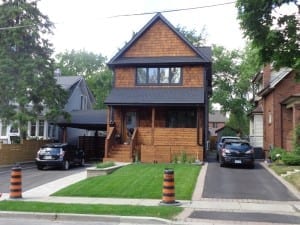
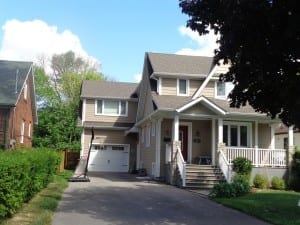
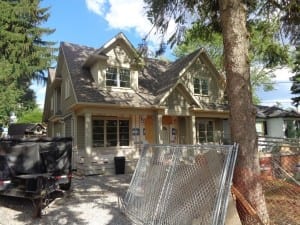
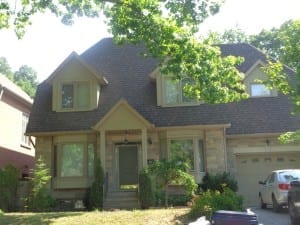
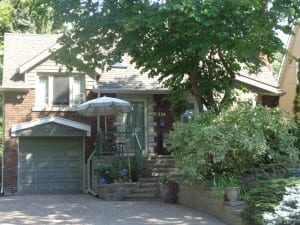
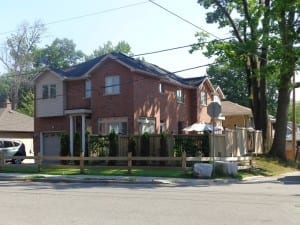
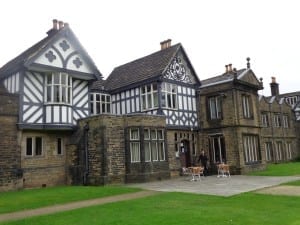
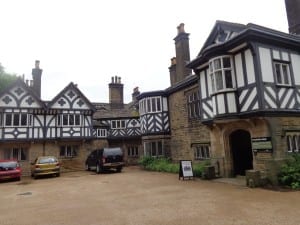
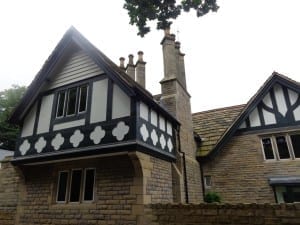
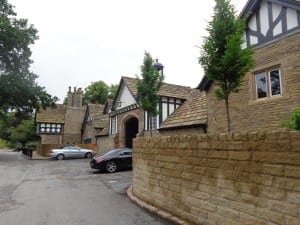
Leave a Reply
Want to join the discussion?Feel free to contribute!